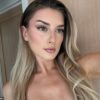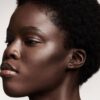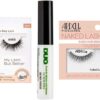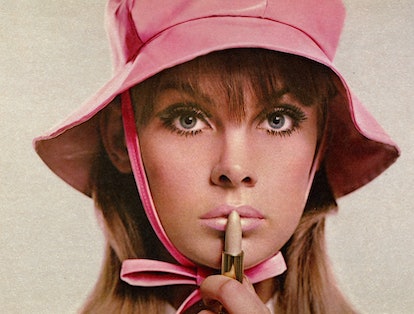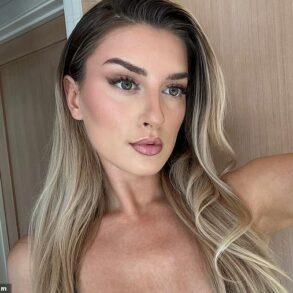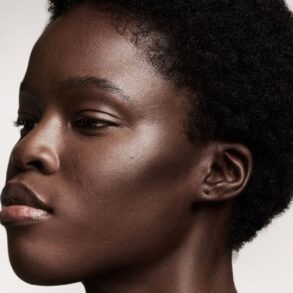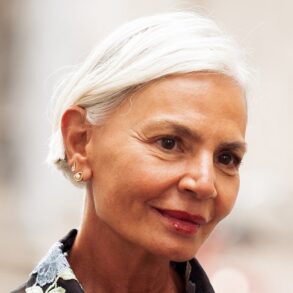Lipstick has never been simply decorative. It has always carried a multitude of meanings, from conveying power and class to sensuality or confidence. But no matter what it conveys, it’s still a statement. Lipstick communicates presence, so it’s no coincidence that the women who have made their presence well known throughout history have usually worn a lipstick to match. Ahead, a brief history of decade-defining lipsticks and the women who wore them best.
The It Girl and her lipstick have been inextricably linked ever since the term was originally coined. Actress Clara Bow originated the concept of “It Girl” by starring in a 1927 film literally titled It. In the film, she’s the protagonist with the just-something-about-her charisma that makes everyone fall in love with her, including the audience (all the more impressive, considering it’s a silent film).
“Clara Bow was a 1920s film star whose lips were of a fascination to the nation and the world,” explains makeup artist Rachel Goodwin, whose illustrious clientele includes Emma Stone, Sarah Michelle Geller, and Riley Keough. “She was the quintessential vamp.”
Bow’s archetypal look included dark lips and a sharply drawn cupid’s bow, which was aesthetic as well as practical. Actresses of the era wore lipstick in shades of black, designed to show up on camera because film at that time couldn’t register reds, and the shape was designed to keep those colors from bleeding into the mouth’s corners. But despite the look being created for the actress, the everygirl also wanted well-defined, nearly heart-shaped lips that were representative of the kind of girl who just has “it.”
With every new decade, new It Girls have emerged, and with them, a look they are best known for — and the look others most want to emulate. No one is more synonymous with red lips than 1950s screen siren Marilyn Monroe, whose look still defines Old Hollywood glamour. (Although, after an extensive search, makeup artist and makeup historian Erin Parsons discovered that Marilyn’s most worn Max Factor Colorfast Lipstick in LS 7-22 N.I was, in fact, a bright orange.) Then, the 1960s saw the rise of pastel and pearly lipsticks during the mod era. Makeup artistry icon Sandy Linter thinks back on the time when “the magazines were Bibles” and seeing English model and actress Jean Shrimpton photographed in frosty pink lipstick had an instant impact.
“No one had ever seen it before and because she was the most beautiful model in the world then every single woman wore pink frosted,” Linter explains. “And it’s never changed. That’s how it always goes.”
In the ’70s, the tides generally turned against lipstick, due in part to second-wave feminism, and mostly earthy shades of brown for those who still wore it — think Ali MacGraw, Jane Birkin, and Cher. In sharp contrast, the ’80s came in hot with flashy hues and shiny, glittery finishes a là Cyndi Lauper and Debbie Harry. The lipstick is always a part of the look that comes to almost cartoonishly define a decade, but at first it was the most exciting look of the times that everyone clamored to copy. The trends you participate in, “become the stuff of your youth, how you define yourself, and how you define your generation,” says Goodwin. “Ultimately, it’s participating in the times that we live in.”
By the ’90s, we got more than ubiquitous shades and trends. We started to learn lipsticks by their full names as mall culture, a makeup brand boom, and better formulas all became a part of the equation. Every makeup artist thinks of MAC Cosmetics’ Russian Red as the first entry into the modern-era “It” lipstick pantheon. Popularized when Madonna famously wore the shade on her 1990 Blonde Ambition Tour, Russian Red was the first-of-its-kind matte lipstick formula to market in 1985. Makeup artist Gregory Arlt, who has worked with red lip icons Gwen Stefani and Dita Von Teese, explains, “That’s when matte lipstick was truly born. Everything in the ’80s was glossy and gooey and didn’t really stay on.” A new formula changed the game for a performer like Madonna, and for every woman who wanted to be like Madonna.
Goodwin remembers working at the MAC counter at the time. “It was a true revolution,” she says. “We could never ever keep it in stock. It was mayhem. It was five women deep. It was working at a nightclub!”
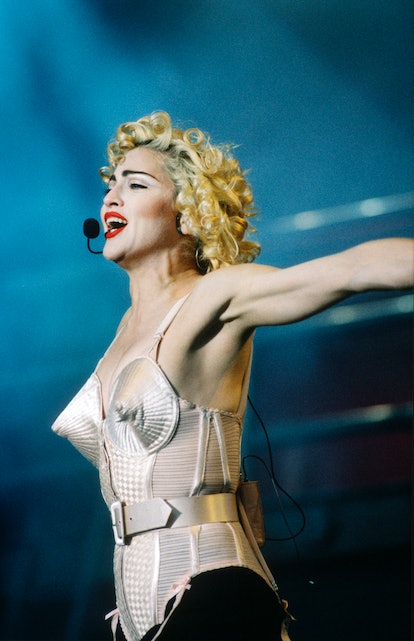

Running parallel to the matte red trend was the rise of lipstick colors that looked like lips — a different lip for a different kind of girl. A more natural and mysterious type, as opposed to the notice-me power of a red-lipped woman. But the thing about the rise of nude lips is it’s not one size fits all. The best recommendations for nudes came from the women that defined fashion at the time.
“Anybody and everybody, no matter what generation, knows Spice lip pencil,” Arlt says. “It was the perfect nude and Linda Evangelista wore it.” It defined the ’90s matte nude lip, especially those who had similar skin tones. For those with darker skin tones, Naomi Campbell created the dominant nude lip aesthetic.
“Naomi set us straight with this in the early ’90s, with her Chestnut pencil and her C-Thru Mac lip gloss in the middle,” says makeup artist Sam Fine, who worked with Campbell at the time. “As makeup artists, we are often inspired by our celebrity clients, and then a look filters [to the public] through us.” The light, lip-tone-matching lipstick focused with a brown liner was a look Black girls and women of color could really identify with.
The 2000s was a decade predominately shellacked in lip gloss. Squeezy Lancôme Juicy Tubes, extra-sticky MAC Lipglass and Stila Lip Glazes in the twist-up pen applicators took over.
Jeanine Lobell, makeup artist and founder of Stila cosmetics and now Neen Makeup, says she created the Stila glosses specifically for Cameron Diaz on the set of iconic 2000 film Charlie’s Angels. “I’m partial, but she really had an effect,” Lobell says. “It was that sheer-with-a-slight-tinge of bubblegum, super glossy, big smiley lip.”
And every woman and girl of every age could participate in the shiny, shimmery, whimsy of gloss. Even 2000s socialite Tinsley Mortimer (more recently turned former Real Housewife of New York) had her peak It Girl moment in 2008 when she got her very own Dior Addict Ultra Gloss in shade Tinsely Pink.
Immediately following the age of gloss came the mega matte resurgence, which was clearly connected to the invention of matte liquid lipstick formulas. Kylie Lip Kits first came to market in 2015 and although she wasn’t the first to ever do it she made the matte, over-drawn lip look explode. The buzz around her (now admitted-to) lip enhancements plus the gimmick of selling lipstick and matching liner together for the express purpose of overdrawing your lips made the trend catch fire.
“It’s not that someone hasn’t worn it before. It’s that the girl, and the makeup artist, and the color come together to make these major moments,” Fine says.
He points to Rihanna’s 2010s love affair with MAC Ruby Woo as another major lipstick moment. The shade was originally released in 1999, but had a new resurgence once she took a liking to the very bright, very matte red. She went on to collaborate on a RiRi Woo lipstick in 2013, which she wore on her Diamonds World Tour that year. Fenty Beauty later launched in 2017 and, not coincidentally, the first lipstick drop from the brand was the Stunna Lip Paint in a singular hero color, Uncensored, a clear shade sister of Ruby Woo. Sure, lipsticks were always worn by and named after It Girls, but the 2010s marked a new era of “It” lipsticks produced by the women themselves.
In the 2020s, TikTok and social media have entirely upended the way we think about discovering and following trends, spinning them out at a pace that, although exciting, is dizzying and making them harder to hold on to. There’s no monoculture to pay attention to, let alone to take beauty tips from, but some trend rules still hold steady: “Every five years or new decade, whatever it is, you just go the opposite for the next trend,” laughs Linter.
Coming off of the matte lipstick redux, there’s been a trend informed by other new formulas. “Innovation is the thing to look at right now with respect to any beauty product, but especially lip products,” Arlt says, adding that right now it’s all about “skin care-infused lip products and lip oils.”
Hailey Bieber appears to be the heir apparent to the It Girl throne. As a brand owner, model, influencer hybrid whose go-to Peptide Lip Treatment is a shiny, see-through gloss with a 2020 skin-care twist, she seems to have hit the nexus of decade-defining ideas.
The more years we live, the more trends we’re likely to participate in, but that doesn’t indicate a lack of self — in fact, it is self-discovery. “Makeup is actually a way to see yourself in a new, and hopefully, positive way,” Lobell reminds. Trying on a lipstick is trying on an identity: Madonna’s brash sexuality, Naomi’s charismatic glamour, Cameron’s girl-next-door allure, or Rihanna’s major boss power. Maybe you’ll own a lipstick wardrobe of all of them, or maybe a red lip will never be for you.
“Regardless of what you buy and try,” Fine says, “you always return to the lip color that makes you feel like the It Girl.”
This post was originally published on this site be sure to check out more of their content.

